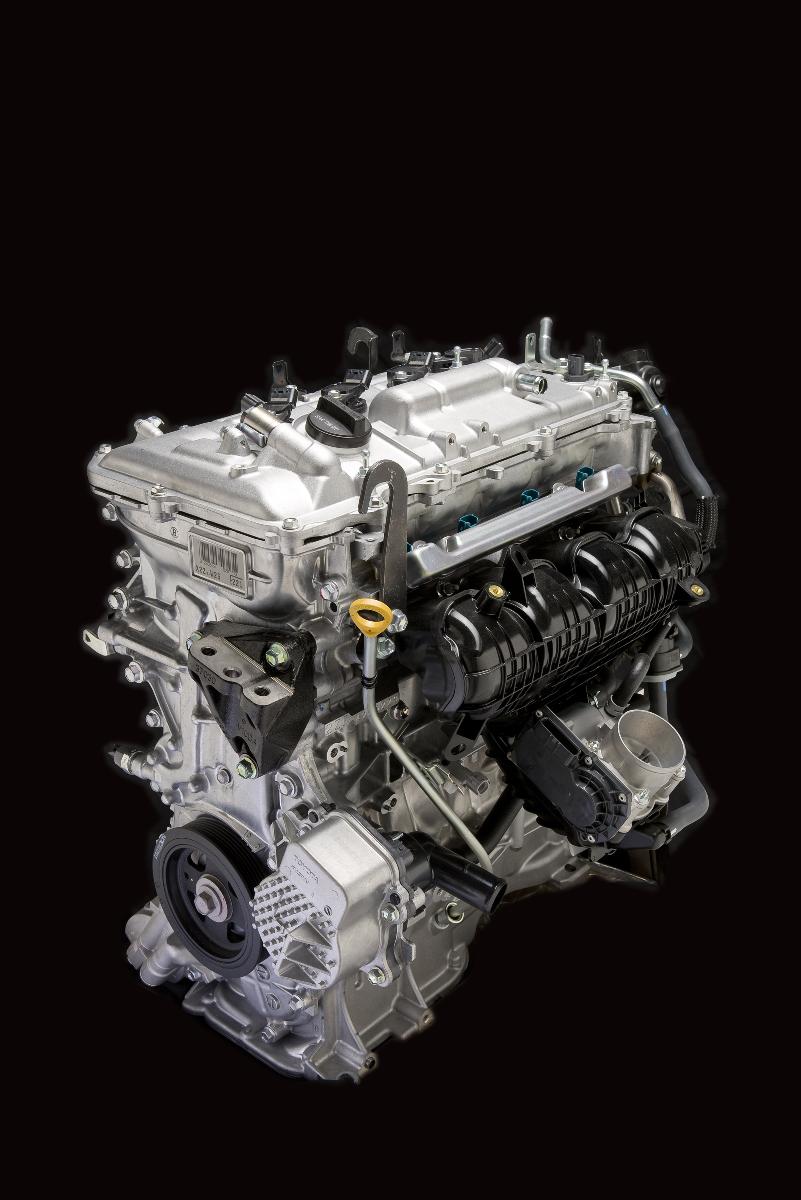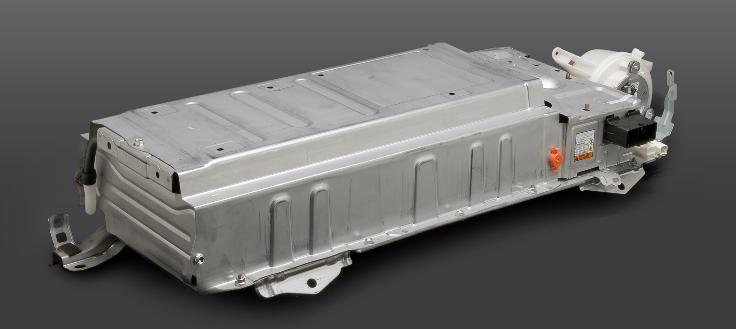
2010 Toyota Prius 1.8-liter gasoline engine, with no accessory drive belts
Every component in the Hybrid Synergy Drive that actually moves the 2010 Toyota Prius down the road has been extensively redesigned and revised. Toyota's goals were to reduce size, cost, and complexity, and the company says more than 90% of the hybrid system is brand new.
The first big change for 2010 is a larger engine, 1.8 liters rather than the 1.5 liters used in the 2009 Toyota Prius and earlier models. Because it develops more torque at lower engine speeds, it improves fuel economy--and increases power--during high-speed cruising.
Among other firsts for Toyota, the engine is completely "beltless". That means that all of the accessories that would have been powered by the engine using belts (air conditioner, alternator, power steering pump, and more) have been replaced by motors that operate on electricity. This means that all of them continue to work seamlessly whether or not the engine is actually running.
The transaxle, which contains two electric motors and a complex gearset, is lighter as well. Toyota claims it cuts torque losses up to 20 percent over the previous model. Both motor-generators are more compact, and altogether, the transaxle, motors, and inverter (an electrical component) are both smaller and 20 percenter lighter--cheaper for Toyota to build, and less of a weight penalty over a regular car.
The combination of all the changes that make up the 2010 Toyota Prius, however--from new body to revised interior to the powertrain--give it even better mileage than its predecessor. The EPA rates it at 51 miles per gallon in the city and 48 on the highway, combining to hit the magical 50 MPG mark.
And for those of you who are curious how a Toyota Prius actually works, here's a brief explanation:
The Hybrid Synergy Drive system seamlessly shifts power to and from the engine and two motor/generators. Those motors are alternative driven by a high-voltage battery pack and a 1.8-liter gasoline engine.
The main motor/generator drives the front wheels through a reduction gear. The secondary motor/generator has many functions: recharging the battery pack, supplementing power from the main electric motor, and starting and stopping the gasoline engine in traffic to save fuel.
The system varies the power split between the primary and secondary motor/generators by altering the speed at which internal gears spin. Different driving conditions call for more power from the primary motor, to move the car, or more going into the secondary, to charge the batteries.
The Hybrid Synergy Drive system quickly adjusts the relative power levels to best suit those conditions without changing the mechanical load on the gasoline engine. In effect, this arrangement acts as a continuously variable transmission, letting the engine run steadily at its most efficient output regardless of road speed.

2010 Toyota Prius high-voltage battery pack

2010 Toyota Prius transaxle, at right, with larger, heavier transaxle from 2009 Prius at left













